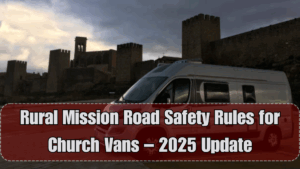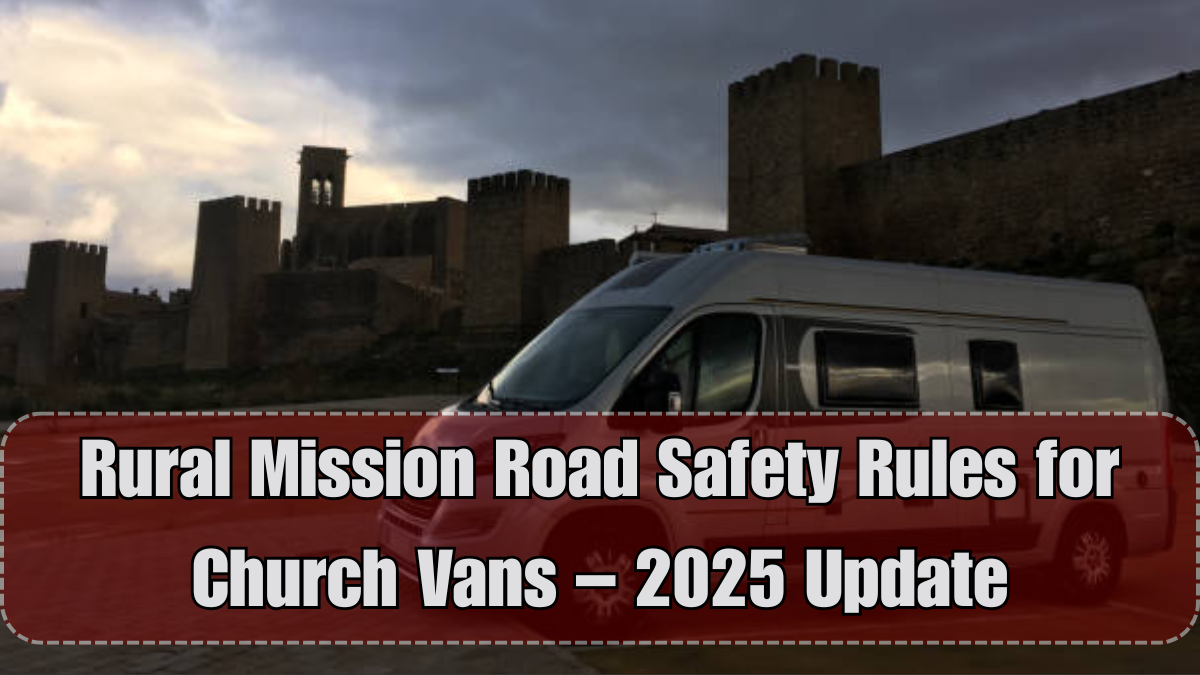As India strengthens its rural infrastructure and transportation regulations, the rural mission road safety reforms introduced in 2025 are transforming how churches operate outreach programs across villages and remote towns. With thousands of churches deploying mission vans daily to support education, health, and spiritual services, road safety has become a top concern for both the government and faith-based organizations.
The new policy framework enforces strict vehicle compliance, driver training, and safety protocols specifically aimed at religious vehicles operating in rural areas. These changes aim to reduce accidents, improve passenger safety, and support responsible transport among faith communities.
Here’s a comprehensive look at how rural mission road safety guidelines are reshaping church van operations in 2025.

Key Changes Introduced in 2025 for Mission Vehicles
The Ministry of Road Transport, in collaboration with the Department of Rural Development, issued an updated set of rules that directly affect mission vans and faith-based vehicles travelling to rural zones.
Major updates include:
-
Mandatory GPS tracking devices on all mission vans
-
High-visibility stickers and reflectors for night travel
-
Compulsory installation of seat belts for all rows
-
Government-approved first-aid kits and fire extinguishers in every vehicle
-
Driver training certification required for rural road clearance
-
Maximum passenger limit capped for safety on narrow roads
These reforms are enforced across all states, with local transport departments monitoring compliance through monthly field checks.
Why the Rules Focus on Church Mission Vans
Mission vans have long been the backbone of rural outreach — from running Sunday schools to delivering medical supplies. However, with rising cases of road mishaps on hilly or unpaved roads, the government has prioritized rural mission road safety to protect both the drivers and the communities they serve.
Reasons behind the rule change:
-
Increase in faith-based travel to rural zones
-
Past incidents involving untrained drivers and overloaded vans
-
Uneven terrain and poorly lit village routes
-
Need to standardize safety for non-profit and church-run fleets
The new policy ensures that church-led missions remain impactful, safe, and compliant with national standards.
Table: Previous vs New Rural Mission Road Safety Norms
| Safety Feature | Before 2025 | After Rural Mission Road Safety 2025 |
|---|---|---|
| Vehicle Tracking | Optional | Mandatory GPS installation |
| Night Visibility Measures | Not required | Reflectors and high-visibility tape |
| Driver Certification | Not enforced | Required from recognized training body |
| Medical Kit | Often missing | Mandatory and regularly audited |
| Passenger Limit | Not regulated | Fixed cap depending on vehicle size |
| Inspection Frequency | Annual | Quarterly by local transport office |
These standards ensure every vehicle under the rural mission road safety framework operates responsibly and can handle emergencies efficiently.
Benefits for Faith-Based Organizations
Adopting these safety protocols also comes with practical and operational benefits:
-
Improved trust with local communities
-
Eligibility for government partnerships and funding
-
Reduced risk of travel-related delays or incidents
-
Easier approval for mission event permits
-
Enhanced safety during long-distance rural campaigns
Faith-based organizations that implement rural mission road safety reforms also enjoy better collaboration opportunities with other NGOs, government health drives, and local schools.
FAQs
What is rural mission road safety?
It refers to the updated 2025 transport rules applied to church and mission vans traveling to rural parts of India, focusing on vehicle safety, driver training, and compliance.
Who must follow these new rules?
All churches, NGOs, and ministries using vans or buses for rural outreach, education, or healthcare must comply with the rural mission road safety standards.
Are old vans allowed to operate under these rules?
Yes, but only if retrofitted with GPS, safety gear, reflectors, and certified to carry the allowed number of passengers.
Do these rules apply across all Indian states?
Yes. The Ministry of Road Transport has made it a nationwide requirement, though enforcement is monitored by each state’s transport department.
Can a small church afford these safety changes?
Yes. Churches can apply for mission vehicle upgrade grants and CSR-based support from faith mobility initiatives launched in 2025.
Click here to know more.
